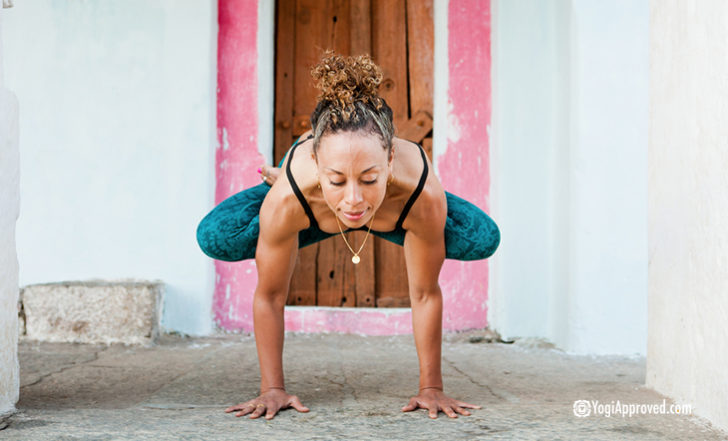7 Ways Yoga Can Help With Healthy Aging

Buddha said: “Nothing is permanent. Everything is subject to change. Being is always becoming.” From the moment we are born until our lives end, we experience constant physical and mental change. Even if we strive for healthy aging, change (and therefore aging) is inevitable.
In our youth, we often celebrate these changes – they represent growth and development, accumulation of skills, and life experiences. But as we move through our lives, many of us become less excited about our altering state.
The aging process is different for each of us, but is usually accompanied by a range of changes – some of which we perceive as positive and some of which we don’t.
We gain skills, life experience, and perspective. But it’s also common to lose muscle mass and bone density, and for our connective tissue to become stiffer and less readily hydrated.
Our skin and hair can change. Hearing and eyesight can diminish. Declines in cognition and memory are also common. Many of us will also experience changes in our lifestyle, household structure, or level of community involvement.
How Yoga Can Help With Healthy Aging
Change is inevitable, but some of these effects can be slowed or even reversed with intelligent intervention.
Yoga is a rich tradition, encompassing much more than just the popular physical practice of asana.
Yoga offers a range of techniques that can help us navigate the aging process with more wisdom and grace, whether by slowing declines in function or by cultivating deeper understanding and acceptance.
Is Yoga the Secret to Staying Young? Here Are 5 Anti-Aging Benefits of This Ancient Practice
Yoga and Healthy Aging – Here Are 7 Ways Yoga Helps Us Age With Wisdom:
1. Movement and Exercise Improve Mobility and Physical Fitness
Our bodies adapt to the demands we place on them: when we move less, we become stiffer, tighter, and less efficient.
Gentle movement in all directions (like circling the joints, rippling through Cat and Cow, and Standing Side Bends) keeps our joints lubricated and the gliding surfaces between our soft tissue layers moving freely.
Faster or more vigorous movement also boosts lung capacity, heart and circulatory health, and the process of autophagy, where the body cleans out old or damaged cells that would otherwise accumulate.
2. Held Postures Strengthen Commonly Underutilized Areas
As we grow older, we are less likely to be involved in physically vigorous work or in lifting and carrying children. It’s common for regions like the arms, back, and core to become less developed as a result.
Holding positions like Downward Facing Dog, Plank, Side Plank, Bird Dog, and Locust Pose can maintain or restore strength in these areas, making us better able to handle the challenges of daily life (like carrying groceries).
That’s not the only practical benefit of strength work for healthy aging. The pull that contracting muscles exert on the skeleton can also slow or delay loss of bone mass. And the more upright posture that comes as a side benefit of a strong body (especially back body) also makes space for free and full breathing.
8 Yoga Poses That Double as Strength Training Exercises
3. Boosts Balance and Stability
Falling is one of the most common causes of injury in older people, sometimes even leading to loss of independence.
Fortunately yoga asana practice abounds with poses that strengthen the feet and ankles, coordination of the left and right sides of the body, standing balances like Tree Pose, and moving transitions that train better coordination and proprioception, all of which improve standing stability and reduce the likelihood of falling.
These 6 Stability Exercises Will Drastically Improve Your Balance
4. Memory Challenges Maintain Mental Acuity
The same way a varied diet offers our body a wide range of nutrients, varied mental inputs offer our brain a wide range of stimulus. In our youth we are constantly learning, exposing our minds to new ideas and new problems to solve.
But as we move through our lives, especially if we exit the workforce, we encounter fewer new concepts; each day becomes more known and familiar.
Many styles of yoga asana offer a different sequence of poses in each class, and this variety can supplement an increasingly predictable life. The process of learning new poses, variations, and transitions each class is a great challenge for the brain, helping us stay mentally sharp for healthy aging.
5 Science-Backed Tips to Slow Down Aging (Because Who Doesn’t Want to Live Longer?!)
5. Nervous System Down-Regulation Reduces Inflammation
Some of the changes we think of as aging could be related to chronic inflammation.
Calming and soothing yoga practices – Restorative poses, Savasana, Yoga Nidra, pranayama, repetition of mantras, and especially meditation – can help by tipping the nervous system into parasympathetic dominance, prompting the relaxation response.
Everything You Need to Know About Chronic Inflammation (According to an Integrative Doctor)
This state decreases inflammation and shifts the body’s resources toward things that support long-term health, like immunity and digestion.
6. Creates Community Connection
Whether we’re focused on our body, our mind, or our perceptions, it’s always easier to face challenges together than it is to confront them alone. A sometimes underrated aspect of yoga practice is the community that it cultivates.
Something about the shared practice of yoga encourages moments of meaningful connection and conversation before and after class that don’t seem to occur in other settings.
Sometimes as we age, especially in retirement, our social circle can shrink, leaving us feeling less included in our community. For healthy aging, community is important.
Even nowadays with so many classes running online rather than in person, the chance to see familiar faces on screen, and spend a few moments in conversation before or after class can make a meaningful decrease in that perceived isolation.
7. Yoga Philosophy Encourages Contentment
Regardless of our religious beliefs, the philosophical underpinnings of the yoga tradition can become increasingly relevant as we age and come to recognize our own impermanence.
Lessons from yoga philosophy are many, but one of the key lessons of Patanjali’s Yoga Sutras is to cultivate balance between abhyasa and vairagya: diligent practice and non-attachment to outcome.
How to Find Inner Peace With Aparigraha (Non-Attachment), the Fifth Yama
It’s important that we do our part – whether that means moving regularly, maintaining our strength, or challenging our balance or memory – but in an uncertain world there’s actually some relief in acknowledging that the end result is out of our hands.
Understanding that the future is unwritten can also remind us to feel contentment, or Santosha, with what we have right now.
The Takeaway on Healthy Aging and Yoga
Change, whether we perceive it as positive or negative, is inevitable in life. But the practice of yoga helps us navigate change with a little more awareness.
It empowers us to do what we can to maintain our mobility, strength, balance, and memory. It reminds us of the restorative power of rest, and connects us to our community.
And, perhaps most potently of all, it resets our perspective, reminding us that if our journey on this earth is a long one, we should expect some bumps along the way.


This Month's Letter
From the Editor
Monthly motivation and food for
thought from our founder.





























